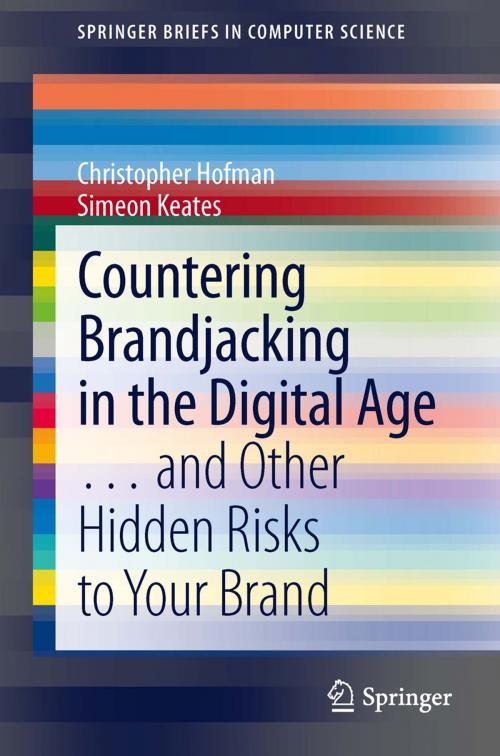Countering Brandjacking in the Digital Age
… and Other Hidden Risks to Your Brand
Nonfiction, Reference & Language, Law, Science & Technology, Computers, Internet, Electronic Commerce, General Computing| Author: | Christopher Hofman, Simeon Keates | ISBN: | 9781447155805 |
| Publisher: | Springer London | Publication: | November 26, 2013 |
| Imprint: | Springer | Language: | English |
| Author: | Christopher Hofman, Simeon Keates |
| ISBN: | 9781447155805 |
| Publisher: | Springer London |
| Publication: | November 26, 2013 |
| Imprint: | Springer |
| Language: | English |
The rise of the Internet and social media in particular offer great opportunities for brand owners to increase business and brand recognition. While this has clearly been of benefit to brand owners, who have seen a consequent rise in the value of their brands, it simultaneously makes those brands more attractive for exploitation or attack by others. Brand risks can come in many different types and this book provides examples of how these risks can arise as well as providing quantitative estimates of the adverse impacts that can result from such risks.
Brand owners need to be aware of the risks and of the need to develop strategies for identifying and managing them. This book details the process by which a brand owner can develop a brand risk management process to protect a brand’s reputation and value. Rather than prescribe a one-size-fits-all approach, the authors provide guidance on how a brand risk management process can be tailored to particular needs and circumstances.
This approach is underpinned by drawing on examples of best practice in the fields of risk management, interaction design and engineering design. This combined approach relies on developing an understanding of the risks faced by a particular brand owner, the full context of those risks and also the brand owner’s capabilities for identifying and managing those risks.
This book contains many real-world examples and interviews with a number of brand owning organisations ranging from small companies to large multinationals.
The rise of the Internet and social media in particular offer great opportunities for brand owners to increase business and brand recognition. While this has clearly been of benefit to brand owners, who have seen a consequent rise in the value of their brands, it simultaneously makes those brands more attractive for exploitation or attack by others. Brand risks can come in many different types and this book provides examples of how these risks can arise as well as providing quantitative estimates of the adverse impacts that can result from such risks.
Brand owners need to be aware of the risks and of the need to develop strategies for identifying and managing them. This book details the process by which a brand owner can develop a brand risk management process to protect a brand’s reputation and value. Rather than prescribe a one-size-fits-all approach, the authors provide guidance on how a brand risk management process can be tailored to particular needs and circumstances.
This approach is underpinned by drawing on examples of best practice in the fields of risk management, interaction design and engineering design. This combined approach relies on developing an understanding of the risks faced by a particular brand owner, the full context of those risks and also the brand owner’s capabilities for identifying and managing those risks.
This book contains many real-world examples and interviews with a number of brand owning organisations ranging from small companies to large multinationals.















